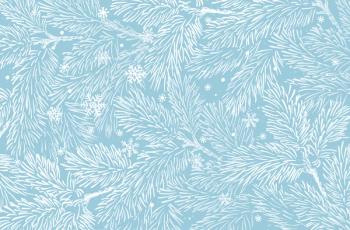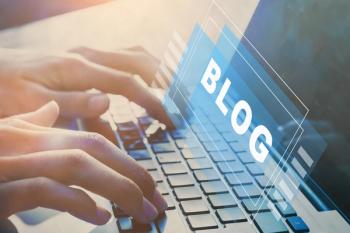
Unveiling Exoplanet Secrets: The Near-Infrared Spectrograph on the James Webb Space Telescope
The James Webb Space Telescope's near-infrared spectrograph (NIRISS) has introduced the single object slitless spectroscopy (SOSS) mode, enhancing our ability to study exoplanet atmospheres with high resolving power. This innovation holds great promise for advancing our understanding of distant worlds and their compositions.
In a revolutionary development for exoplanet research, the near-infrared spectrograph (NIRISS) on the James Webb Space Telescope (JWST) has introduced the single object slitless spectroscopy (SOSS) mode, transforming our ability to study distant worlds. This innovative technology opens up a new chapter in our quest to understand the atmospheres and compositions of exoplanets. Loïc Albert and a large team of scientists and engineers have published a detailed description of this spectrograph (1).
For years, scientists have been intrigued by the possibility of studying exoplanet atmospheres to unlock the secrets of newly discovered distant worlds. The SOSS mode is a key instrument in this endeavor, allowing astronomers to perform time-series observations (TSOs) of exoplanets, which involves observing the same exoplanet over time to gather valuable data about its atmosphere and surface.
One of the early methods for studying exoplanet atmospheres was to use traditional transmission spectroscopy, proposed by Seager and Sasselov in 2000 (2). However, it wasn't until space telescopes like the Hubble Space Telescope (HST) came into play that this method gained traction. The first successful attempts at transmission spectroscopy with HST led to groundbreaking discoveries, including the detection of water vapor and other molecules in exoplanet atmospheres.
The SOSS mode was born out of the need to improve exoplanet transmission spectroscopy. It was developed as part of the NIRISS instrument on JWST, specifically designed to observe exoplanets discovered by the TESS mission. SOSS offers a unique set of advantages, including the ability to observe much brighter stars, making it a game-changer for studying exoplanet atmospheres.
The optical design of SOSS involves a zinc selenide (ZnSe) grism coupled with a cross-dispersing zinc sulfide (ZnS) prism, which projects three spectral diffraction orders onto the detector. A grism is an optical component of a dispersive spectrograph that allows for an in-line optical configuration, and is comprised of a grating and one or more prisms. This configuration enables the observation of stars as bright as magnitude 6.7 with a resolving power of 650 at a wavelength of 1.2 μm (1200 nm). SOSS covers a wavelength range from 0.6 to 2.8 μm (600 to 2800 nm), encompassing critical spectral features such as water (H2O), methane (CH4), carbon monoxide (CO), and carbon dioxide (CO2) bands, as well as atomic lines of potassium (K) and helium (He). Note that a resolving power of 650 means that the optical instrument, in this case, the spectrograph, is capable of distinguishing between two spectral lines or features that are separated by a wavelength difference of 1/650th (approximately 0.00154) of the wavelength being observed (1.2 μm).
The SOSS mode offers several subarray modes to cater to different observation needs, ensuring its versatility and adaptability. Ground-based testing and commissioning observations have confirmed that SOSS is performing at its best, delivering results comparable to other JWST time-series modes.
One of the standout features of SOSS is its excellent white light flux stability. During a 5-hour TSO on an A-type star, designated as BD+60°1753, the data showed remarkable stability, with any fluctuations following the expected photon statistics. This stability extends down to approximately 20 ppm on a 40-minute timescale, making it ideal for detecting subtle changes in exoplanet atmospheres.
To produce high-quality data, several data processing steps are crucial, including 1/f noise correction, cosmic-ray flagging, bad pixel interpolation, and zodiacal background subtraction. These steps ensure that the analysis reaches near photon-noise limited levels.
Despite its remarkable performance, SOSS does face some challenges, such as positional excursions between visits that affect wavelength calibration. Efforts are underway to characterize and address these issues. Additionally, SOSS has demonstrated its potential as a wavefront sensor for detecting mirror segment tilt events on JWST.
The real excitement lies in the science programs now possible with SOSS TSOs. The NIRISS instrument development team has allocated nearly 200 hours of observation time to the NIRISS Exploration of the Atmospheric Diversity of Transiting Exoplanets (NEAT) program. NEAT aims to measure the carbon-to-oxygen (C/O) ratios for a diverse range of exoplanets, giving detailed information on their formation and evolution.
In conclusion, the introduction of the single object slitless spectroscopy (SOSS) mode on the near-infrared spectrograph (NIRISS) of the James Webb Space Telescope (JWST) is a major leap forward in our ability to study exoplanet atmospheres. This cutting-edge technology, with its excellent stability and versatility, opens up exciting possibilities for unraveling the mysteries of distant worlds and advancing our understanding of the cosmos.
References
(1) Albert, L. et al. The Near Infrared Imager and Slitless Spectrograph for the James Webb Space Telescope--III. Single Object Slitless Spectroscopy. 2023, arXiv:2306.04572. DOI: 10.1088/1538-3873/acd7a3
(2) Seager, S. V.; Sasselov, D. D. Theoretical transmission spectra during extrasolar giant planet transits. Astrophys. J. 2000, 537 (2), 916. DOI 10.1086/309088
Newsletter
Get essential updates on the latest spectroscopy technologies, regulatory standards, and best practices—subscribe today to Spectroscopy.




